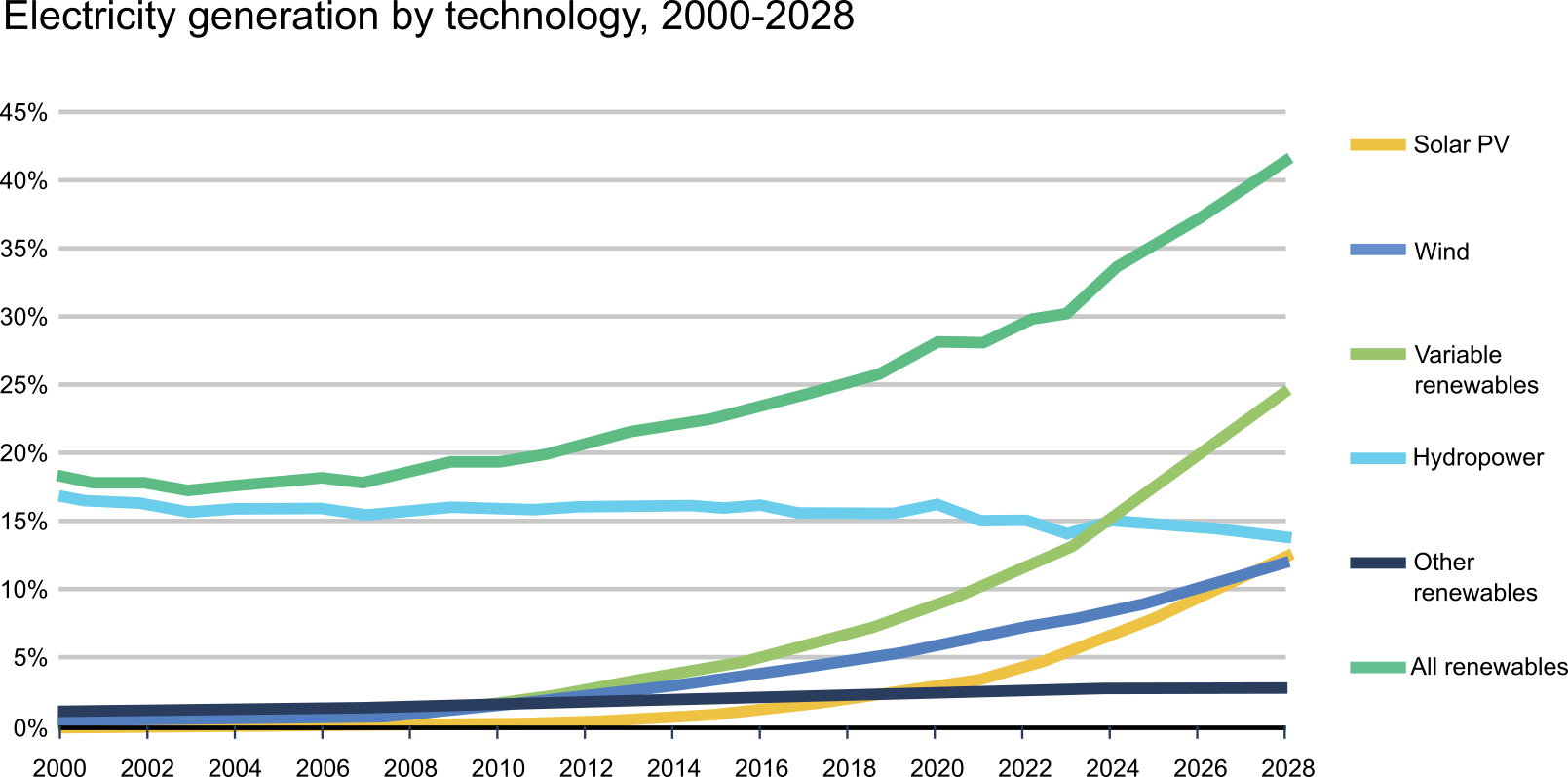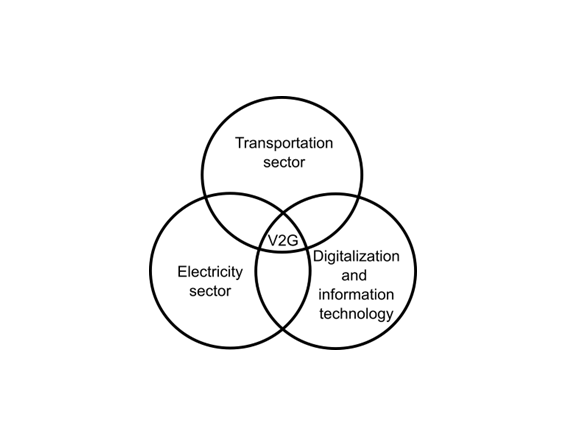Industries
Vehicle-to-grid (V2G) technology is at the heart of efforts to integrate sustainable energy systems with electromobility. V2G enables electric vehicles (EVs) to function not only as a means of transportation but also as energy storage units and suppliers. This technology has the potential to facilitate the integration of renewable energy sources, enhance grid stability, and provide financial benefits to consumers. As part of a master’s thesis at the Zurich University of Applied Sciences (ZHAW), Helbling explored the current challenges hindering the successful implementation of this technology and how its immense energy and economic potential can be harnessed.
The principle of vehicle-to-grid (V2G) technology is simple: while vehicles are connected to the power grid, they can not only charge but also feed energy back into the grid. This is achieved through intelligent control systems that regulate energy flow based on grid demands and the battery's state of charge. Technologically, the development of V2G is closely linked to advancements in battery technologies, charging systems, and smart grid systems. Progress in lithium-ion battery technology has significantly improved the lifespan and efficiency of EV batteries, making V2G more feasible. Similarly, modern bidirectional inverters and communication protocols play a crucial role in ensuring secure and seamless interactions between vehicles and grid operators.

Today, V2G appears to be on the brink of successful commercialization. Helbling has analyzed the technological and economic landscape of V2G and identified eight key aspects that are prerequisites for its implementation. This work was conducted as part of a master’s thesis at the Zurich University of Applied Sciences (ZHAW). At Helbling, the topic is approached from a multidisciplinary perspective across construction projects, initiatives to expand charging infrastructure for transport companies, and vehicle development. This allows insights from the automotive, energy, electronics, and software industries to be incorporated into forward-looking concepts.
V2G holds great potential for future energy systems
After years of conceptual development and technological advancements, the growing adoption of electric vehicles for personal transportation has created a new starting point for V2G.

Pilot projects are underway in countries such as Japan, the United States, and several European nations to test the economic and technical feasibility of this technology. In the Netherlands and Denmark, there are already initial commercial V2G projects in which EV owners are compensated for providing grid stability services.
The added value for grid operators lies in the buffering capability offered by on-demand energy storage. This buffering, known as load shaping, is essential because renewable energy sources are typically intermittent and subject to daily or seasonal fluctuations.

Despite the promising opportunities, there are challenges that are delaying the widespread adoption of V2G. These include high implementation costs, technical complexity, and concerns regarding the impact on the lifespan of vehicle batteries. Regulatory uncertainties and the need for a unified standard also hinder development.
The future of V2G technology heavily depends on the collaboration between vehicle manufacturers, energy providers, grid operators, and governments. However, with the ongoing expansion of electromobility and the shift towards decentralized energy production, V2G could become a key component of the energy system of the future.

Eight key aspects for V2G implementation
There are a variety of technologies and leverages that could significantly contribute to the successful implementation of V2G with further development.
1. Battery technology
The batteries of electric vehicles are at the heart of V2G technology. To effectively utilize V2G, batteries must have a high capacity, long lifespan, and fast charging and discharging cycles. In addition to emerging advances in solid-state battery technology, improved cathode materials, and more efficient battery management systems, demand-based sizing and the smart selection of active materials are especially critical when it comes to performance and reliability. Helbling can draw on extensive experience from projects with motor vehicles and specialized vehicles.
2. Bidirectional charging technology
The charging technology on the user side is even more crucial than the battery technology, and this has made significant advances in energy density and cost effectiveness over the past 15 years. Current charging stations are mostly unidirectional, meaning they only enable vehicle battery charging. Bidirectional charging stations are required for V2G that not only charge the vehicle but also feed energy back into the grid. The development of efficient and, above all, cost-effective bidirectional inverters is key here. Additionally, these systems must be compatible with existing charging infrastructures.
3. Smart grid infrastructure
While the battery and charging technology concern the user side, the focus for energy providers is on the smart grid infrastructure. A smart grid is essential for V2G integration. Smart grids must be able to dynamically manage energy flows and efficiently handle EV feed-in. This requires advanced grid management systems capable of responding to changes in demand and supply in real time. Furthermore, smart grids must be scalable to accommodate the increasing number of EVs and their energy contributions.
4. Communication protocols and standards
Standardized communication protocols and standards are necessary to ensure seamless interaction between electric vehicles, charging stations, and grid operators. Consistent interfaces enable different systems to be integrated and improve interoperability between various manufacturers and grid operators.
5. Energy management systems (EMS)
Intelligent energy management systems are required to optimally control the energy flow between vehicles and the power grid. These systems must be capable of optimizing the timing of charging and discharging. Key factors include grid requirements, energy prices, and the individual needs of vehicle users. In addition to conventional optimization routines, Helbling employs artificial intelligence and machine learning to develop precise and efficient control algorithms.
6. Security technologies
Bidirectional energy transfer and the associated data communication increase the security requirements of systems. Advances in cybersecurity are necessary to ensure data integrity and the security of the power grid. Moreover, physical security mechanisms must be implemented to prevent damage caused by malfunctions or overloads.
7. Connectivity and data infrastructure
A robust and reliable data infrastructure is essential for real-time communication between EVs, charging stations, and grid operators. Advances in wireless communication technology can reduce latency and increase data transfer rates. Additionally, data management systems must be established to efficiently process and analyze large volumes of data.

8. Societal acceptance
It is important not to overlook the fact that a widely deployed V2G system requires the willingness of a large number of private customers to grant an energy supplier access to the energy storage of their vehicles. Although this is likely to happen within a clearly defined framework and without noticeable short-term impacts, raising awareness and information campaigns combined with attractive compensation models should be considered.
Summary: Development work for V2G can accelerate the energy transition
Vehicle-to-grid technology is much more than a technical innovation. It represents a paradigm shift toward a dynamic and sustainable energy system, making vehicles active participants in the power grid. The next decade will be crucial in fully realizing the potential of V2G and making a significant contribution to the energy transition. With its multidisciplinary expertise in vehicle technology, energy systems, electronics, software development, and system integration, Helbling is well positioned to meet the needs of vehicle manufacturers, energy providers, and end consumers. Through close collaboration with partners along the value chain, Helbling can play a key role in overcoming the technical and economic challenges of V2G implementation.
Authors: Julian Locher, Simon Müller
Main Image: Freepik



